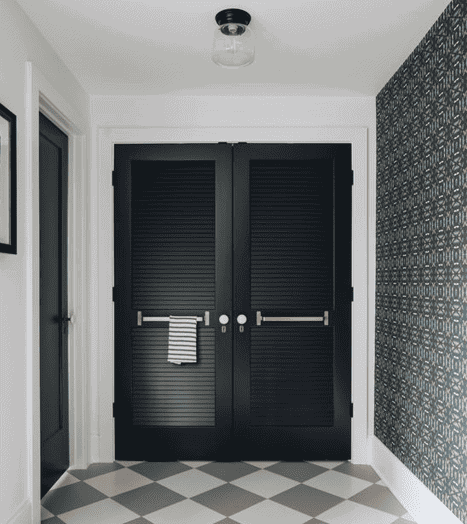
Selecting and Installing Louvered Doors: A Comprehensive Guide
Selecting and Installing Louvered Doors: A Comprehensive Guide
From opulent mansion houses to cozy cottages, interior doors are an essential design element that often gets overlooked. They offer privacy, noise reduction, and can be a crucial part of the architectural aesthetic of a space. Louvered doors have a unique charm and functionality that can enhance the appeal of any room. This comprehensive guide will walk you through everything you need to know about selecting, maintaining, and installing louvered doors in your home or business.
Understanding Louvered Doors
What are Louvered Doors?
Louvered doors are designed with slats, or louvers, set into the door, rather than a solid surface. This distinct feature allows for airflow and light to pass through, making them a popular choice for areas that require ventilation or for closets where air circulation is essential. They add a touch of character to any room while serving a functional purpose.
Advantages of Louvered Doors
- Ventilation: Louvered doors allow air to flow freely, which can be particularly useful in laundry rooms, pantries, or any room where ventilation is necessary.
- Aesthetic Appeal: They provide a classic, laid-back look and are often associated with beach or cottage interiors.
- Light Transfer: The slats allow light to filter through, even when the door is closed, creating a warm and inviting atmosphere.
Disadvantages of Louvered Doors
- Less Sound Insulation: Because they are not solid, louvered doors do not provide as much noise reduction as solid doors.
- Privacy Concerns: While they maintain some privacy, they allow shadows and some visibility, which might not be ideal for all areas.
- Dusting: More complex to clean than solid doors as dust can accumulate on the slats.
Factors to Consider When Selecting Louvered Doors
Style and Aesthetics
Choose a style that complements the design aesthetic of the room. Louvered doors come in various styles, including traditional, contemporary, and rustic, so you can find one that suits your taste.
Material and Durability
Select a material that is both durable and fits the intended usage of the door. Common materials for louvered doors include wood, MDF, and aluminum.
Size and Fit
Accurate measurements are crucial. Louvered doors can be customized to fit a particular space, so take your time to ensure the door will fit perfectly.
Maintenance Requirements
Consider how much time and effort you're willing to dedicate to maintaining your doors. Wood may need more care than materials like MDF or aluminum.
Installation Process for Louvered Doors
Preparing the Door Frame
Ensure the door frame is in good condition and that it's clean and level. Any imperfections can affect the installation and future operation of the door.
Measuring and Cutting the Door
Accurate measurements are essential for a smooth installation. Once measured, you may need to cut the door to ensure the louvers are aligned with any other doors or windows in the space. You can also purchase louvre doors made to your exact door opening size, making installation easier. Swinging Cafe Doors does not recommend cut our louvre doors to fit a door opening size.
Attaching Hinges and Hardware
Select suitable hinges that will support the weight of the door. The hardware should be of high quality and installed securely for smooth operation over time.
Hanging the Door
With the proper placement of the hardware, hanging the door is the final step. Position the door carefully to ensure it opens and closes without friction.
Tips for Caring and Maintaining Louvered Doors
Cleaning and Dusting
Use a vacuum to remove dust from the slats regularly. You can also use a damp cloth for a deeper clean, but be careful not to saturate the wood, as this can cause warping.
Preventing Warping and Damage
Avoid excess moisture and extreme temperature changes. Consider sealing or painting the doors to protect them from the elements, particularly if you have louvered doors in areas like bathrooms or kitchens.
Repairing and Refinishing
If a louver becomes damaged, it can often be repaired or replaced. Refinishing the door periodically will keep it looking great and increase its lifespan.
Conclusion
Louvered doors offer a unique blend of style and functionality, making them a versatile choice for many interior design applications. By understanding the considerations for selecting and installing them and following the care and maintenance tips provided in this guide, you can enjoy the benefits of louvered doors for years to come.
So, if you're pondering a home improvement project or a design overhaul, don't underestimate the impact that a well-chosen louvered door can have. Whether it's about creating a relaxed, beachy vibe or ensuring proper ventilation in your laundry room, louvered doors can be both a practical and a delightful addition to your space. As you go about your selection and installation, remember, the devil's in the details—make those small adjustments and alignments, and you'll have a standout feature in your interior design.
For a step-by-step video tutorial and more design inspiration, check out our gallery of louvered doors in real spaces. Happy louvering!

